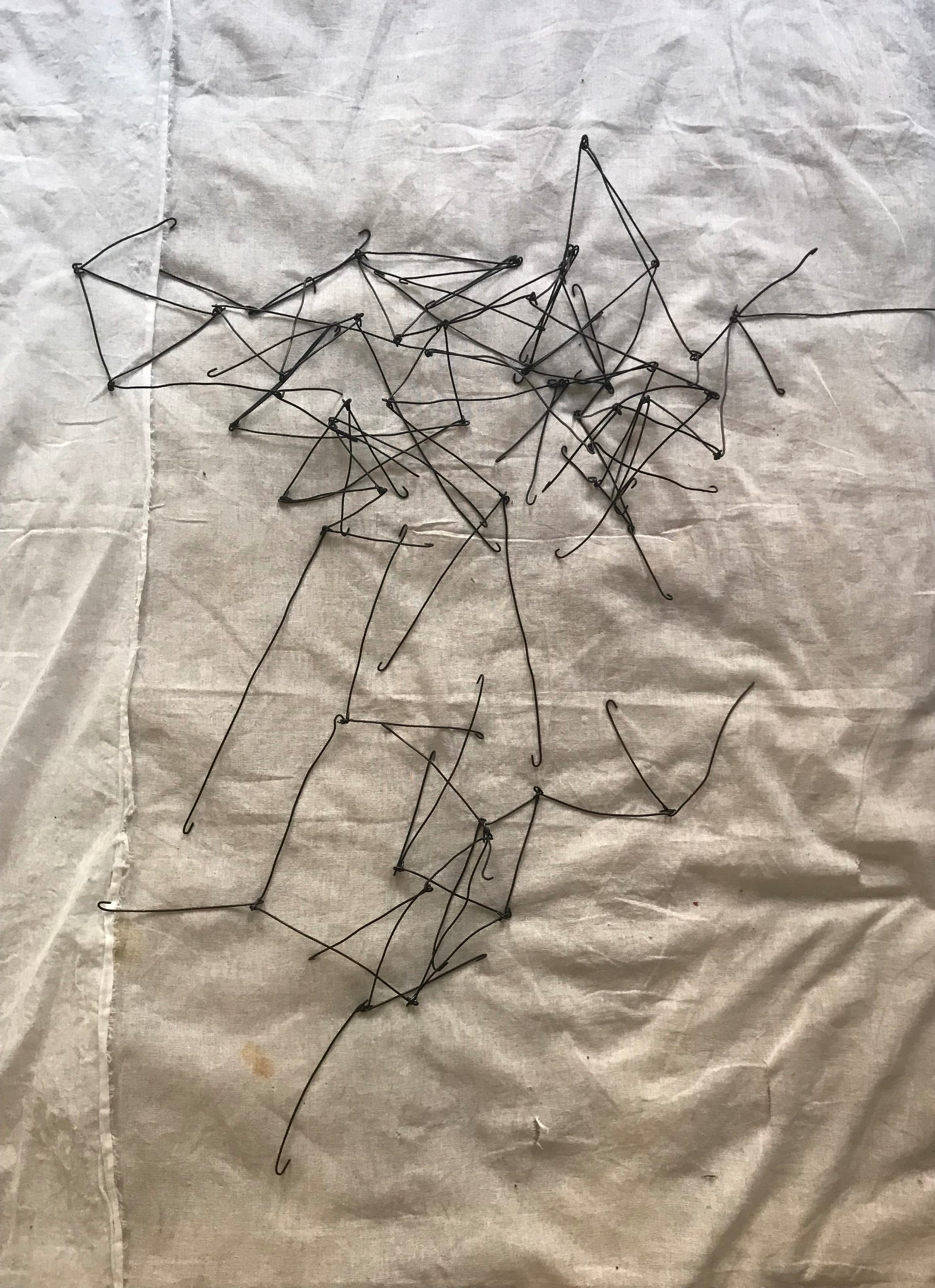reflections upon surveying past blog posts
I investigate the relationships between boundaries and the human body in space. I’m interested on how the body comprehends and engages with the material world and in the exchange that takes place during that interaction.
As a maker, I experience a strong connection with the materials I use, physicality and complete immersion in the act of making allows me to experience an intimate space, where distance is immeasurable and boundaries disappear. I find thyself in what I make, identification and projection take place. I find myself in the palpable, moment to moment adaptation and proximity to the object, a close contact/ interaction that provides a visceral understanding of who and where I’m in space.
As an observer, I see, separate and create distance between things. This differentiation between the observer and that which is being observed creates space that allows form to take place (boundary/ limit) for further interaction, observation and contemplation.
With that being said: making attend to the work and the self while observing defines them. When defining things/ the work/ the self , I encounter a lot of difficulties in sticking to one definition or opinion hence I’m constantly facing change; rising, falling, shifting, re-labeling what’s out there to achieve balance with what remains: tactile approach to space.
sculptural sketches: rebar on linen
defining elements: assigning qualities & dimensions to my research
keywords: touch, proprioception, rhizome, form, strata, assemblage, lines of flight, contact, space, human body, motion, multiplicities, perception (the senses), contemplation, interaction/ live action.
I have been working on defining the dimensions of my research. For which I have created a series of sculptural sketches using iron rebar to materialize (3-dimesionally) the boundaries delineated on underground forest (see map below). But before getting into space I would like to mention the layers and meaning assigned to each layer piled up onto this map I’m using to navigate and understand the directions I’m taking in relationship to other theories and artist’s practice.
grid: representing space-time as the backdrop-fabric, scenario where all happens.
magnets: representing my work including: the self, ideas, experience, dreams, imagination expressed through writing, mapping, drawing, building and interacting.
rhizomatic lines: representing boundaries, lines of contact, directions, brunches of study, interests, another artist’s practice
territories: layers of my praxis, lines of contact, strata forming a territory us much as other theories and practices form other territories
river: stream, continuous flow between the above-mentioned territories- navigating this river, establishing connections and interaction along the stream will contribute to further understand, develop and position my work.
cutting-looping-linking lines
The method consists of cutting different lengths of metal (rebar) looping both extremities, closing one end while the other remains open, until the next length comes in to be looped again. Each length of material connects to other lengths bringing about a sequence of lines and loops open and closing as the assemblage grows.
the assemblage: an organism
Handling, twisting, folding, looping, linking lengths of rebar (*). One length leading to another, opening and closing on the extremities. There are no fix points of connection only loops allowing mobility within the assemblage. Like a chain, one leading to the next, in which the length coils to be linked to something greater than itself, no longer belonging to itself but rather becoming part of a whole. From the individual it is changed into an intermediary, a link transmitting to a greater whole. Substance in progressive growth and expansion. Perceived as a natural organism resting on the floor of my studio. There is no anchoring, only points and lines in contact with the ground.
*rebar a material extensible used in construction for its ability to bear tension, usually combined with concrete that works under compression. Both function very well together giving shape to plastic ways of building. This combination called reinforced concrete has been and continues to be a method to erect superstructures.
Cluster, flimsy arches joining intricate corners. Geometry of the underworld, a maze: I kneel myself through an opening, leading to another opening, passageways to new illusions…un claro, tu voz, mi mano.
outline for NY winter residency presentation
background
Inner landscapes: architecture of flowing boundaries
process
Re-thinking the way the human body comprehend and engages with the material world by:
-Re-introducing a sensorial approach to making including all the senses with a focus on vision and touch.
-Observing the exchange that takes place through touch when interacting with objects and materials in space
Re-visiting past work, interacting and creating new objects, reconnecting with a tactile approach to materiality understanding how valuable these interactions are since they have brought and continue to bring a lot of realizations about the way I think, behave and make. Becoming instruments for my own realization; as a musician tunes and plays his/her instrument, I interact with the objects I create from which I gain insights that I use to unfold my work/practice.
feedback I want to get from the audience
aim for the interaction/ live action:
Describing relationships between subject (you) and any object chosen to interact with. Bearing in mind the following research questions related to the relationship between space, boundaries and the human body:
-How do boundaries / object inform behavior and movement?
-What kind of thoughts and feelings the interaction triggers (if any)?
Follow your breath, choose any of the senses to focus your attention while interacting with the object.
By understanding how others perceive/ experience the material world may beam light onto my research question, opening up the field for conversations related to how we see, experience and create new patterns.








































